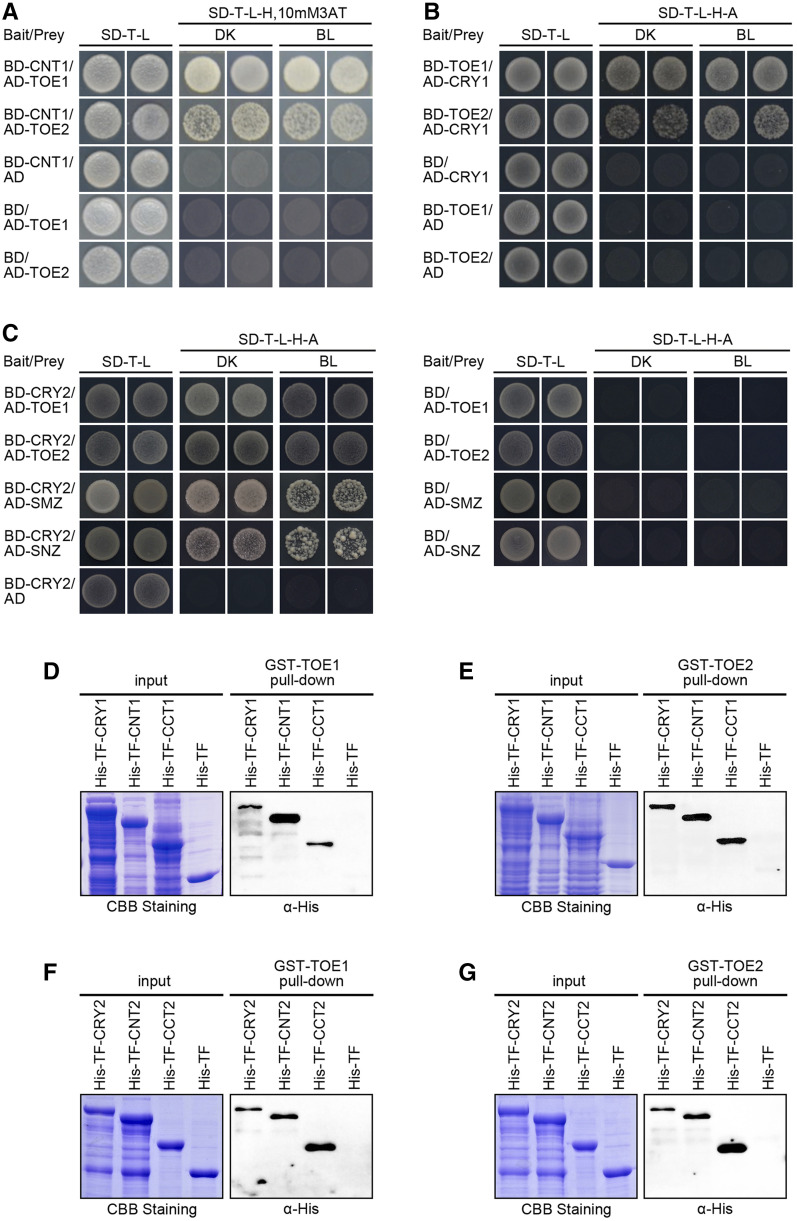Figure 1.
CRY1 and CRY2 physically interact with TOEs in yeast and in vitro. A, Yeast two-hybrid assays showing the interactions of CNT1 with TOE1 and TOE2. Yeast cells coexpressing the indicated combinations of constructs were grown on nonselective (SD-T-L) or selective media (SD-T-l-H) with 10 mm of 3AT in DK or BL (30 μmol m−2 s−1). “CNT1” denotes the CRY1 N terminus. B and C, Yeast two-hybrid assays showing the interactions of CRY1 with TOE1 and TOE2 (B), and CRY2 with TOE1, TOE2, SMZ, and SNZ (C). Yeast cells coexpressing the indicated combinations of constructs were grown on nonselective (SD-T-l) or selective media (SD-T-L-H-A) in DK or BL (30 μmol m−2 s−1). D to G, In vitro pull-down assays showing the interactions of CRY1, CNT1, and CCT1 with TOE1 (D) and TOE2 (E), and CRY2, CNT2, and CCT2 with TOE1 (F) and TOE2 (G). GST-TOE1 and GST-TOE2 served as bait. His-TF (as negative control), His-TF-CRY1, -CNT1, -CCT1, -CRY2, -CNT2, and -CCT2 served as preys. Input denotes Coomassie Brilliant Blue (CBB) staining. CCT1 denotes CRY1 C terminus. CNT2 and CCT2 denote CRY2 N- and C termini, respectively.

